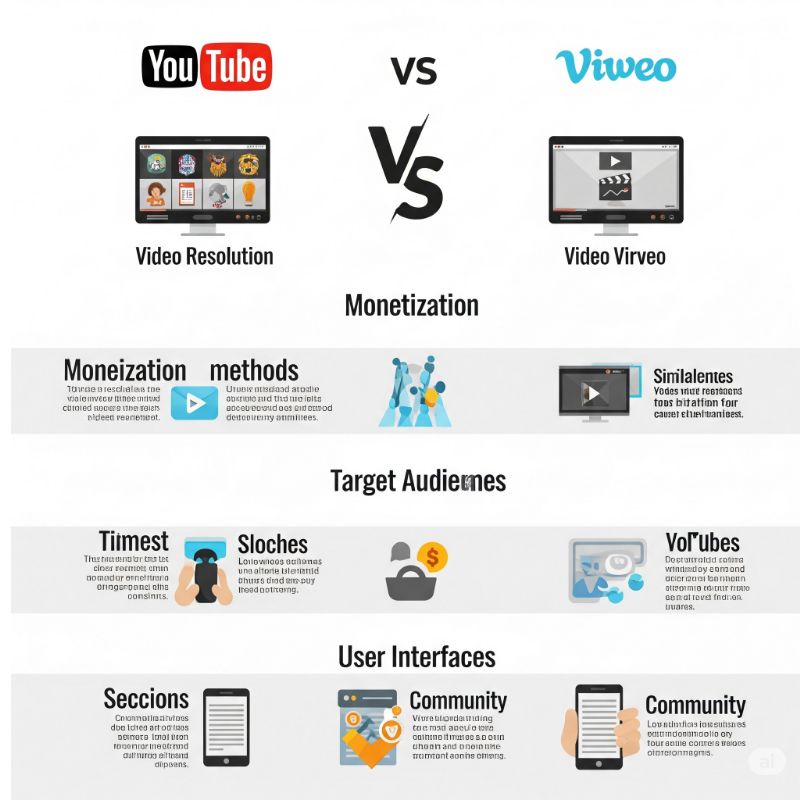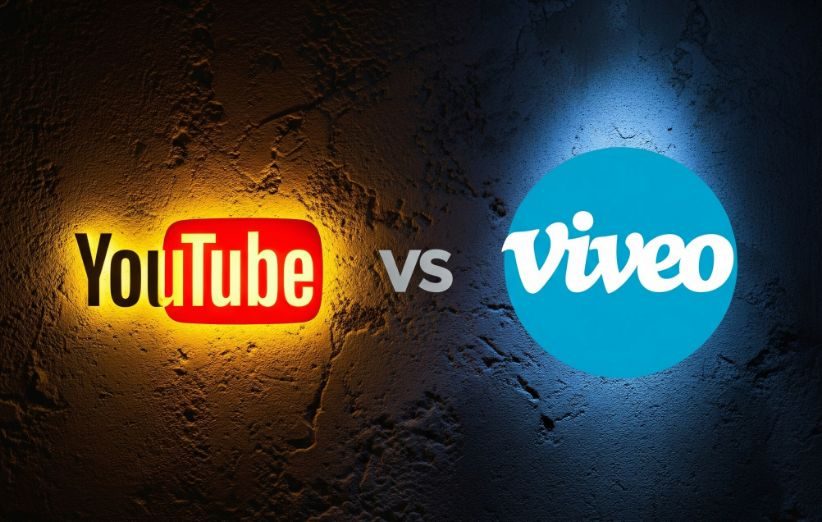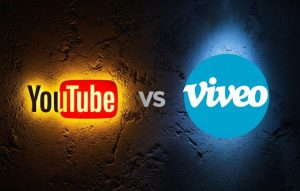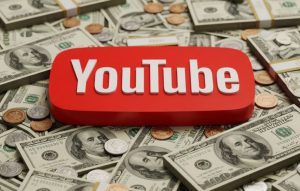On the surface, YouTube and Vimeo seem like two sides of the same coin: they are the two biggest names in video hosting. But beneath the surface lies a fundamental question that every creator, marketer, and business must ask: What is the difference between YouTube and Vimeo? Choosing the right platform isn’t just a matter of preference; it’s a strategic decision that can define your audience, your brand’s perception, and your path to making money.
Let’s get straight to the core of it. YouTube is a sprawling, ad-driven social media giant designed for mass-market entertainment and maximum reach. Vimeo, on the other hand, is a sophisticated, ad-free toolkit for filmmakers, professionals, and businesses who prioritize quality, control, and direct monetization. One is a broadcast television network; the other is a premium cable subscription service.
The 10 Key Differences Between YouTube and Vimeo
While both YouTube and Vimeo are titans of online video, they are built for fundamentally different purposes. Choosing between them depends entirely on your goals as a creator. Here are the 10 biggest differences that define each platform.
-
Business Model: Ads vs. Subscriptions
YouTube: Operates on an advertising model. It’s free for everyone because its primary customers are advertisers who pay to show ads on your videos. The platform’s goal is to maximize views and watch time to serve more ads.
Vimeo: Operates on a Software-as-a-Service (SaaS) model. It is ad-free because its primary customers are the creators who pay for a subscription. The platform’s goal is to provide powerful tools, high-quality hosting, and professional features to its paying members.
-
Audience and Community: Mass Market vs. Niche Professionals
YouTube: A massive, global audience of over 2 billion users looking for everything from entertainment and vlogs to tutorials and news. It’s a “lean-back” entertainment platform.
Vimeo: A much smaller, more curated community of filmmakers, artists, businesses, and creative professionals. It’s a “lean-forward” platform where users actively seek high-quality, artistic, or professional content.
-
Monetization: How Creators Make Money
YouTube: The primary way to earn is through ad revenue sharing. Once you join the YouTube Partner Program (YPP), you get a 55% cut of the ad revenue generated on your videos. Other methods include channel memberships, Super Chat, and merchandise shelves.
Vimeo: Since it’s ad-free, monetization is direct. You can sell your videos or series directly to your audience (Vimeo On Demand), launch your own subscription service (like a personal Netflix), or accept tips. You have full control over the pricing.
-
Payouts: How Much Do They Pay?
YouTube: Payouts are variable and depend on your RPM (Revenue Per 1,000 Views). An average creator might earn $2 – $7 per 1,000 views, but this can be much higher in valuable niches like finance or tech. Earning significant income requires millions of views.
Vimeo: Payouts are based on your sales. Vimeo offers a generous 90/10 revenue split, meaning you keep 90% of the income from your sales after transaction fees. A single sale of a $20 video could earn you more than tens of thousands of views on YouTube.
-
Video and Audio Quality
YouTube: Compresses videos aggressively to save server space and ensure fast loading for its massive user base. While it supports 4K, the quality (bitrate) is generally lower.
Vimeo: Is renowned for its superior video quality. It uses a higher bitrate, resulting in a cleaner, sharper image with more detail and better sound quality, which is critical for professional filmmakers.
-
Privacy Controls
YouTube: Offers basic privacy settings: Public, Unlisted, and Private.
Vimeo: Provides robust, professional-grade privacy. You can password-protect videos, restrict embedding to specific websites you own, and set up private, shareable review pages for clients.
-
Player Customization
YouTube: The embedded player is standard and includes YouTube’s branding and links. You have very little control over its appearance.
Vimeo: Offers extensive player customization. You can change the player’s colors, add your own logo, disable the share button, and control exactly how it looks and functions on your website for a seamless brand experience.
-
Analytics and Tools
YouTube: Provides incredibly detailed, free analytics about audience demographics, traffic sources, and watch time. Its tools are focused on audience growth and content performance.
Vimeo: Offers good analytics, but the most advanced stats are reserved for higher-tier paid plans. Its tools are more focused on video performance in a business context, such as engagement graphs and integration with marketing software.
-
Content Discovery and Reach
YouTube: As the world’s second-largest search engine, its potential for organic discovery and virality is massive. The recommendation algorithm can push your video to millions of new viewers.
Vimeo: Discovery is much more limited. It relies on being featured by Vimeo’s human curators or being found within its niche communities. It is not a platform designed for accidental, viral discovery.
-
Cost for Creators
YouTube: Completely free to upload unlimited videos and access all monetization features (once you qualify for the YPP).
Vimeo: Offers a limited free plan, but to access the professional tools, higher storage limits, and monetization features, you must subscribe to a paid plan, which can range from a modest monthly fee to expensive enterprise-level pricing.
Summary Table: YouTube vs. Vimeo at a Glance
| Feature | YouTube | Vimeo |
|---|---|---|
| Primary Goal | Maximize Views & Ad Revenue | Provide Professional Video Tools |
| Audience | Mass Market, General Public | Niche, Professionals, Artists |
| Monetization | Ad Revenue (55% Share) | Direct Sales (90% Share) |
| Video Quality | Standard (Heavily Compressed) | High (Higher Bitrate) |
| Privacy | Basic (Public, Unlisted, Private) | Advanced (Password, Domain-level) |
| Cost to Creator | Free | Subscription-Based (Paid Tiers) |
| Best For… | Reaching the largest possible audience. | Showcasing high-quality work with full control. |

Audience & Community: Where Does Your Content Belong?
Because of their different models, YouTube and Vimeo attract very different communities.
- YouTube’s Audience: It’s everyone. With over 2 billion users, it’s a global audience looking for everything from entertainment, vlogs, and gaming to tutorials and news. The community is vast, interactive, and can be unpredictable.
- Vimeo’s Audience: It’s a more niche, professional community. You’ll find filmmakers, animators, creative agencies, and businesses showcasing their high-quality work. The community is smaller but is often more constructive and supportive of artistic content.
For more insights into video platforms, publications like Forbes Innovation often cover the strategic positioning of these tech giants.
Monetization Models: How Do You Actually Make Money?
This is where the platforms diverge completely. How you earn money is fundamentally different and is often the deciding factor for creators.
| Monetization Method | YouTube | Vimeo |
|---|---|---|
| Primary Income Source | Ad Revenue Sharing (You get 55% of ad money). | Direct Sales (You sell your video directly to viewers). |
| Requirement to Earn | Join YPP (1000 subs, 4000 watch hours). | Purchase a paid Vimeo plan. |
| Control Over Price | None. Depends on advertisers. | Full control. You set your own rental/purchase price. |
As you can see, YouTube’s model is about volume, while Vimeo’s is about value. We explore Vimeo’s unique model in our guide, How Much Does Vimeo Pay Per 1000 Views?, which explains why view count isn’t the primary metric for earnings.

Video Quality, Player & Features: A Technical Showdown
For creators who care about the technical details, there are significant differences here too.
- Video Quality: Vimeo is renowned for its higher bitrate and superior compression, resulting in cleaner, sharper video quality compared to YouTube’s more aggressive compression.
- Player Customization: YouTube’s player is standard and includes heavy branding. Vimeo’s player is highly customizable—you can change colors, add your own logo, and control every button.
- Privacy Controls: Vimeo offers robust privacy tools, including password protection and domain-level restrictions, which are essential for businesses and client work. YouTube’s privacy options are more basic.
Boosting your content’s visibility on either platform can be accelerated. A YouTube SMM panel can help with initial views and subscribers, while a Vimeo SMM panel can provide likes and plays to enhance your video’s social proof.
The Final Verdict: Which Platform is Right for You?
So, after comparing these giants, which one should you choose? The answer to “What is the difference between YouTube and Vimeo?” should now guide your decision.
- Choose YouTube if: Your goal is maximum reach, building a large community, and earning money through ads. You are creating content for a broad audience and want to leverage the world’s second-largest search engine.
- Choose Vimeo if: Your goal is to present high-quality video in a professional, ad-free setting. You are a filmmaker, a business, or an educator who needs powerful tools, robust privacy, and the ability to sell content directly.
Many creators use both—YouTube for public-facing trailers and vlogs, and Vimeo for hosting the premium, paid version of their work. Ultimately, the choice depends on your brand and your goals. For more insights on digital content platforms, resources like WIRED’s section on Video offer great analysis.
No matter which platform you use, giving your channel a boost can make a huge difference. You can find the cheapest SMM panel to fit your budget and strategic needs.

Frequently Asked Questions (FAQ)
1. Can I upload the same video to both YouTube and Vimeo?
Yes, you absolutely can. Many creators do this. They use YouTube for wide public exposure and embed the ad-free, higher-quality Vimeo version on their own website for a more professional presentation.
2. Is it easier to get discovered on YouTube or Vimeo?
It is significantly easier to get discovered by a large, general audience on YouTube due to its massive user base and powerful recommendation algorithm. Discovery on Vimeo is more about being featured by curators or being found by people searching for high-quality, niche content.
3. Do I have to pay to use YouTube or Vimeo?
YouTube is completely free for creators to upload and monetize content. Vimeo has a free basic plan, but to access its key professional features like advanced privacy, customization, and monetization tools, you must subscribe to one of their paid plans.







